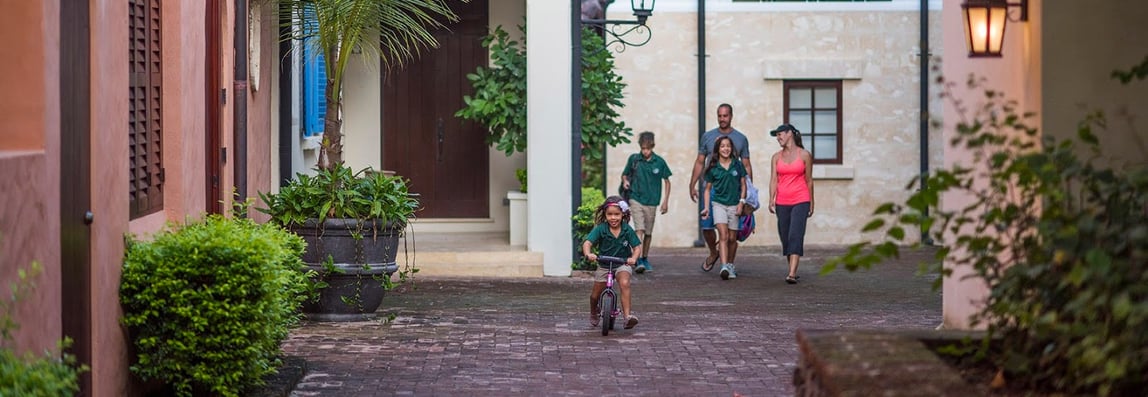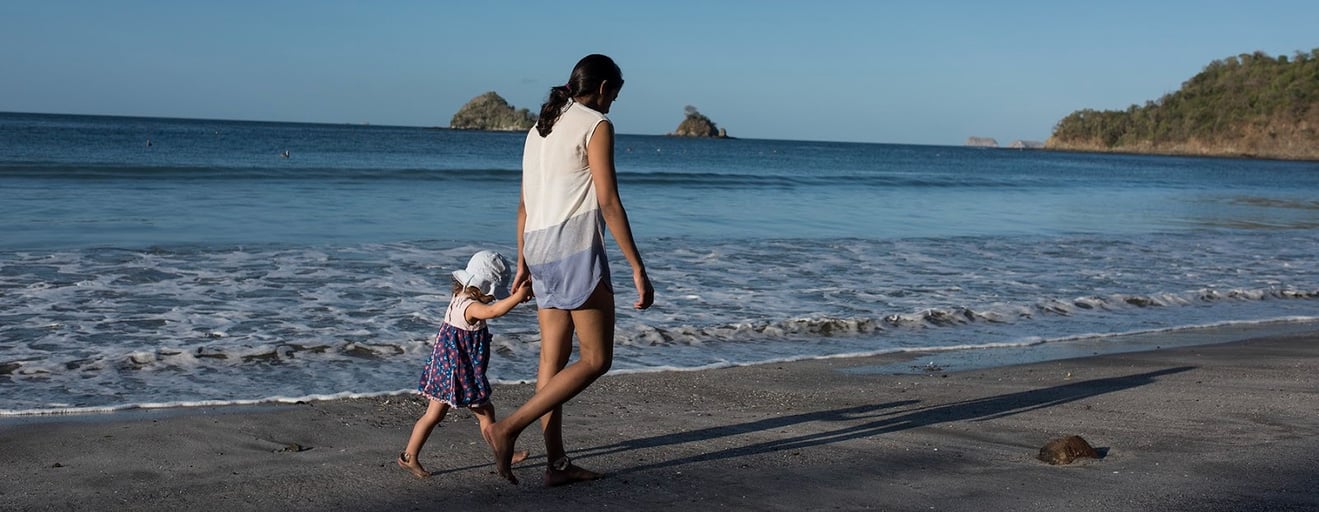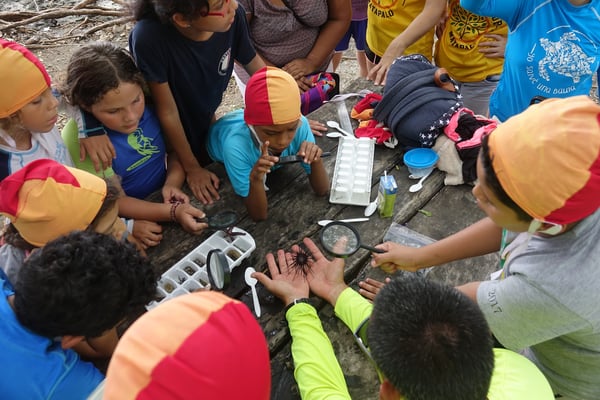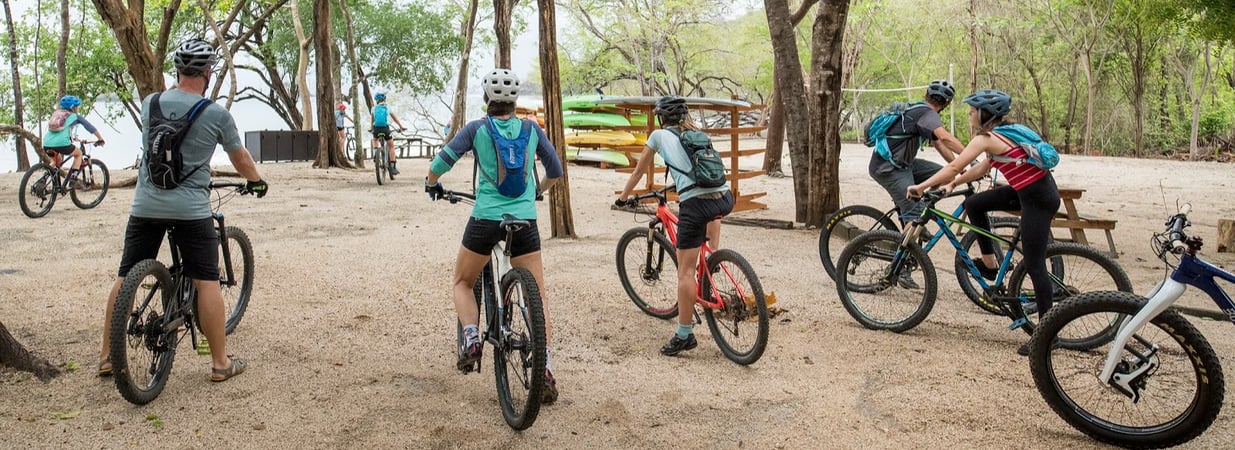Back to School in Costa Rica: A Look at Education in Guanacaste
In Costa Rica, many students are returning to school after summer. For some students, this is the start of another school year, while for others school has already resumed for about a month after a short break for summer.
In Guanacaste, this time of year brings back the familiar sight of school buses in mornings and afternoons, as kids head off to learn, make friends, and find passions to pursue.
Thanks to a nationwide dedication to education, Costa Rica is ranked fourth out of almost 100 countries in terms of accessibility of schooling, which includes a #1 ranking in Central America and over a 90% countrywide literacy rate. The country has also recently come third in all of Central and South America on international standardized tests behind Uruguay and Chile.
Schooling in the region follows a simple structure similar to that around the world. Preschool comprises students up to 5 years of age, primary school includes students 6-12 years old, secondary schooling is available for students 13-18 years old, and diversified education specialities and higher education are available for the students who choose to pursue them.
The extra benefits in a demographically and ecologically diverse place like Guanacaste are that students are exposed to unique enrichment activities and a complex group of people and ideas.
For families looking to move to a destination for the moderate or the long term, this combination of familiar structure, high quality education, and exposure to interesting experiences and people creates a rich environment for kids to learn and grow.

A Family Perspective on Making the Move to a New Destination
There are many reasons for a family move to a new destination, whether that be for sabbatical, a few years away, or an indefinite change of environment.
However, one aspect of life that unites nearly all families is the question of education, and for the purposes of educating and raising students, bringing up children in a rich, diverse new environment offers many tangible benefits.
Families who move to a new place together generally show closer bonds throughout life, and students who have lived in multiple locations show a much higher rate of continuing education than their single-location counterparts. Combined with the intangibles of new life experiences and opportunities that are unique to each region, there are quite a few reasons to make the move.

Schooling in Guanacaste
There are a number of both public and private schools in Guanacaste, each offering a different education for the student. Public schools follow a unified standard from the Costa Rican education system, while private schools in the region have a wide range of accreditations and perspectives on schooling.





Thanks to the international nature of the country and region, Guanacaste features Montessori, International Baccalaureate, Waldorf, MEP, MSA, and other accredited schools from which to choose the education and lifestyle that best suits the family and their goals.
 Educarte encourages students to value and respect the differences between them, supporting cultural consciousness and encouraging curiosity and expression. Guanacaste’s Waldorf School offers an emphasis on wellbeing and environmental awareness. CRIA offers a college preparatory outlook, with a focus on helping students grow both morally and intellectually to ready them for a complicated and quickly changing world.
Educarte encourages students to value and respect the differences between them, supporting cultural consciousness and encouraging curiosity and expression. Guanacaste’s Waldorf School offers an emphasis on wellbeing and environmental awareness. CRIA offers a college preparatory outlook, with a focus on helping students grow both morally and intellectually to ready them for a complicated and quickly changing world.
TIDE Academy focuses on student curiosity, freedom of activity and schedule, and an adaptable learning environment that can adjust to students who lead unique and interesting lifestyles. La Paz Community School (below), combines a focus on intellectually rigorous studies with an emphasis on connecting with family and the local community.
When coming to Guanacaste, it’s worth touring the schools in the region to understand in person before making a decision. Each has a unique identity, and finding the right fit is key.
However, a few characteristics unite many private schools in Guanacaste. Almost all feature a blend of Costa Rican and expatriate students, almost all schools teach in both English and Spanish or are multilingual, and all schools offer the chance for immersion into the way of life in Guanacaste.
Student Enrichment in Guanacaste
While students are in Guanacaste, there are a wide variety of athletic, artistic, and intellectual enrichment options for both primary and secondary school students.
Many schools offer after-school programs ranging from individual and team sports to art and music to culinary training to conservation and community service. The ecological diversity of the region lends itself to a number of adventure sports like surfing, mountain biking, paddle board, kayaking and scuba diving. Events like festivals and las fiestas, holiday parades and celebrations, and a rich history of dance and independent artisans offers exposure to the culture and history of the region.
There are also a number of organizations that offer after school programs for students in the region. One such example is ConnectOcean, an organization located in Las Catalinas which combines athletic, intellectual, and ecological enrichment. ConnectOcean hosts six different Citizen Science Explorer Programs, swimming lessons and swim coaching, as well as the country’s premier dive training academy and training in Nipper Lifesaving, a sport where young students learn the fundamental skills of surf lifesaving and put them to the test in exciting competitions.
The freedom for students to explore and discover their own favorites is a big part of Guanacaste’s appeal. Opportunities are not always obvious, but for curious and driven students, this part of the country offers many ways to learn and grow outside of the classroom.

 Las Catalinas for Students and Families
Las Catalinas for Students and Families
The beach town of Las Catalinas is a place that combines many of the values of Guanacaste. This walkable coastal village features almost exclusively pedestrian streets, which creates a natural sense of safety and strengthens the feeling of community and integration into a different place. Living in a friendly and welcoming place, the ecological and human resources around town come to life.
Town is located at the foot of a tropical dry forest hills, and stretches along the shores of two sandy beaches on the Pacific Ocean, so students to explore nature as they learn to protect it with ConnectOcean and local conservation teams. For architectural study, town’s timeless tropical traditional influences offer a glimpse into millennia of history. Town’s chefs draw from experiences around the world as they create their own takes on cuisine, inspiring and educating culinary minds.
Add in the expertise and life stories of new neighbors who hail from a wide range of backgrounds across Costa Rica and the world, and you have a hotbed for personal and intellectual growth for students. It’s a place where students can explore free from parent car rides, develop a naturally active and healthy lifestyle, build personal responsibility, and spark an inherent curiosity.
Making the Transition to Life in Guanacaste

Katie Thompson, a single mother of two, notes that her family is much more active since they moved to Las Catalinas over a year ago. “We take a lot of walks together now,” she said. “That’s when the really nice conversations happen.” Ms. Thompson also finds it a relief not to worry about traffic while her children bike and play in the streets.
“They have never known this kind of freedom before, and it gives me a new freedom, too,” she said.
- Nora Walsh, "A New Community Rises in Costa Rica, but Don’t Bring Your Car"
There are some elements that can complicate a move, but in Guanacaste schooling is not one of them. There’s easy transportation to schools via school busses, and an easy rhythm to life. Due to the high amount of travelers in Guanacaste, transfers from other regions and other countries are a familiar and easily integrated part of life, making the social aspects of a switch much easier on students. Schools follow diverse international accreditations, ensuring that students can fit right into education here and prepare themselves for entrance at universities around the world.
In many ways, it’s not a big change from the familiar routines of schooling in most places around the world. But in the most important ways, it is a big change. Students get to make friends from Costa Rica and around the world, explore a new way of living, learning, and having fun than what they knew before, and share an experience with family that will shape the rest of their lives.
The best way to get a sense for the feel of life in Guanacaste is to visit and see the area. There are flights from United States gateway cities into Liberia International Airport every day, homes are available for rent in towns both large and small to get a sense for the area, and many schools are just a short drive away.
From there, the next step is to find a long term rental or a full-time home, and ultimately turn Guanacaste into home.




